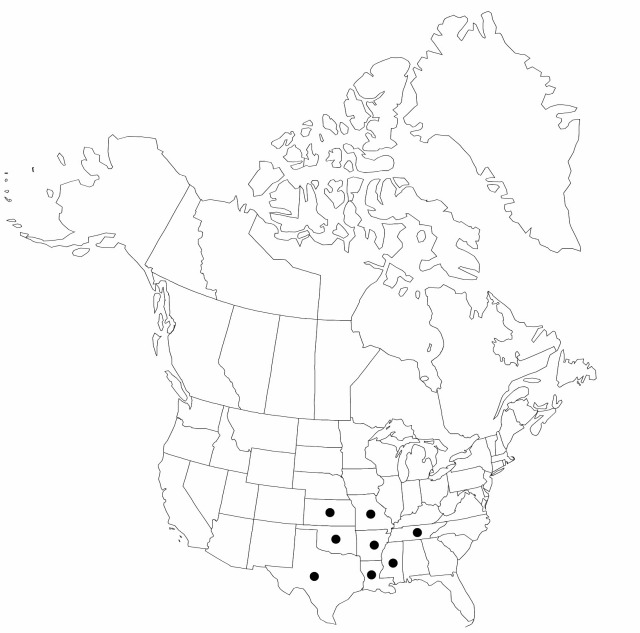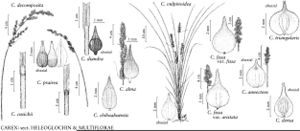Carex triangularis
Flora 39: 226. 1856.
Culms to 100 cm × 2 mm, scabrous. Leaves: sheath fronts spotted red-brown or pale brown, apex short-convex, membranous or slightly thickened, rugose; ligule retuse, to 0.5 mm, free limb to 0.1 mm; blades 70 cm × 5 mm, tip not reaching inflorescence. Inflorescences spicate, 2.5–6 × 1.5 cm, with 10–15 branches, proximal scarcely separate; the proximal internode to 10 mm; proximal bracts setaceous, not conspicuous, distal bracts scalelike. Scales hyaline, brown, awn to 2 mm, usually shorter than scale body. Perigynia yellow-brown, red dotted, 3–5-veined abaxially, body broadly ovate, 2.5–5 × 2.5–3 mm, base rounded; beak 0.8–1.2 mm. Achenes red-brown, elliptic, 1.4–1.6 × 1.2 mm, dull.
Phenology: Fruiting Jun.
Habitat: Open habitats, wet meadows, wet prairies, roadside ditches in seasonally saturated or inundated soils
Elevation: 0–600 m
Distribution

Ark., Kans., La., Miss., Mo., Okla., Tenn., Tex.
Discussion
The red-dotted perigynia of Carex triangularis separates the species from all other taxa in the section; however, it is similar to C. annectens in the relative lengths of leaves and flowering stems, and in the yellow-brown, ovate perigynia that are larger and broader than in C. annectens.
Selected References
None.
